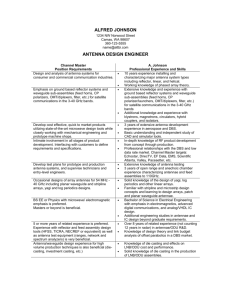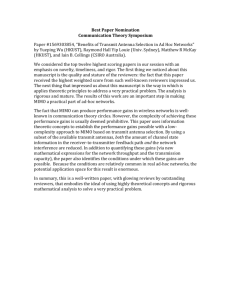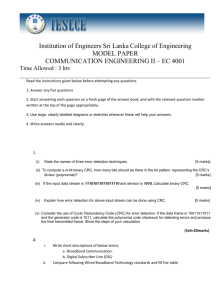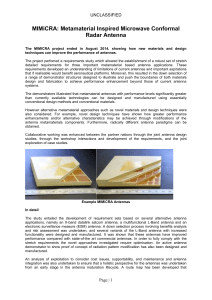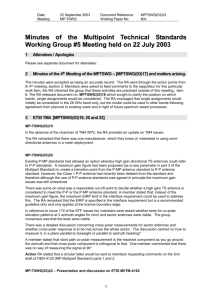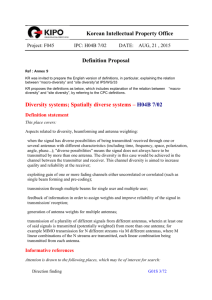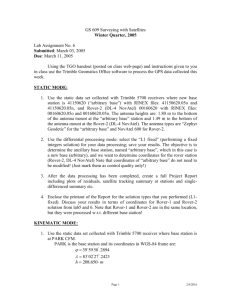Syllabus and Model Question Papers for Ph.D
advertisement
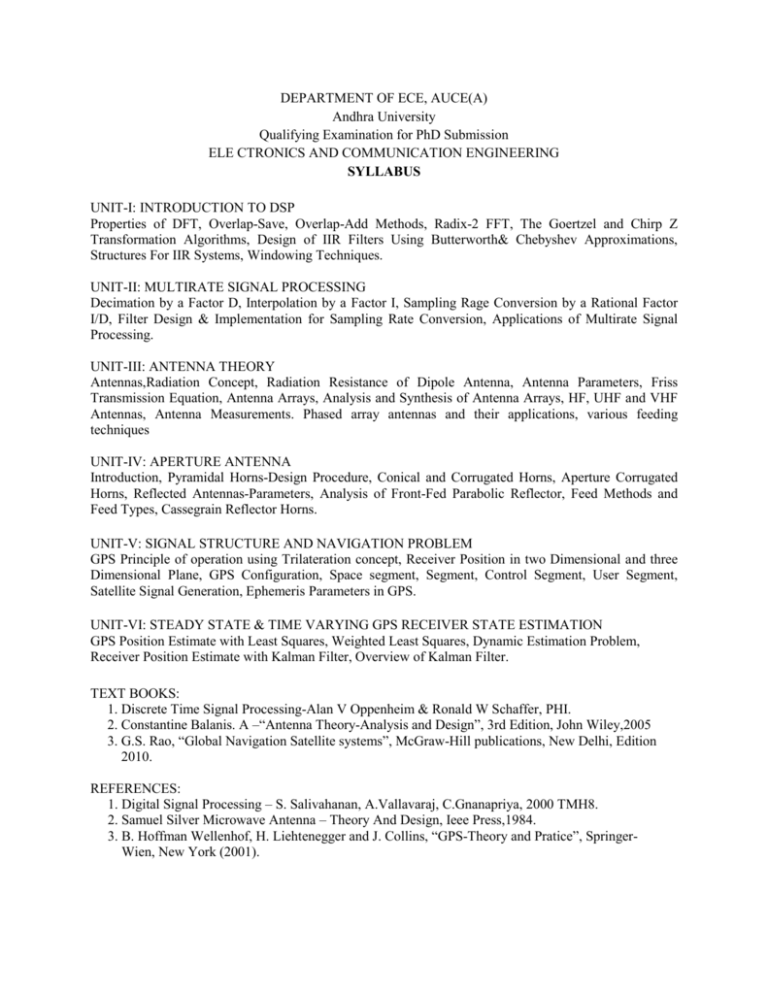
DEPARTMENT OF ECE, AUCE(A) Andhra University Qualifying Examination for PhD Submission ELE CTRONICS AND COMMUNICATION ENGINEERING SYLLABUS UNIT-I: INTRODUCTION TO DSP Properties of DFT, Overlap-Save, Overlap-Add Methods, Radix-2 FFT, The Goertzel and Chirp Z Transformation Algorithms, Design of IIR Filters Using Butterworth& Chebyshev Approximations, Structures For IIR Systems, Windowing Techniques. UNIT-II: MULTIRATE SIGNAL PROCESSING Decimation by a Factor D, Interpolation by a Factor I, Sampling Rage Conversion by a Rational Factor I/D, Filter Design & Implementation for Sampling Rate Conversion, Applications of Multirate Signal Processing. UNIT-III: ANTENNA THEORY Antennas,Radiation Concept, Radiation Resistance of Dipole Antenna, Antenna Parameters, Friss Transmission Equation, Antenna Arrays, Analysis and Synthesis of Antenna Arrays, HF, UHF and VHF Antennas, Antenna Measurements. Phased array antennas and their applications, various feeding techniques UNIT-IV: APERTURE ANTENNA Introduction, Pyramidal Horns-Design Procedure, Conical and Corrugated Horns, Aperture Corrugated Horns, Reflected Antennas-Parameters, Analysis of Front-Fed Parabolic Reflector, Feed Methods and Feed Types, Cassegrain Reflector Horns. UNIT-V: SIGNAL STRUCTURE AND NAVIGATION PROBLEM GPS Principle of operation using Trilateration concept, Receiver Position in two Dimensional and three Dimensional Plane, GPS Configuration, Space segment, Segment, Control Segment, User Segment, Satellite Signal Generation, Ephemeris Parameters in GPS. UNIT-VI: STEADY STATE & TIME VARYING GPS RECEIVER STATE ESTIMATION GPS Position Estimate with Least Squares, Weighted Least Squares, Dynamic Estimation Problem, Receiver Position Estimate with Kalman Filter, Overview of Kalman Filter. TEXT BOOKS: 1. Discrete Time Signal Processing-Alan V Oppenheim & Ronald W Schaffer, PHI. 2. Constantine Balanis. A –“Antenna Theory-Analysis and Design”, 3rd Edition, John Wiley,2005 3. G.S. Rao, “Global Navigation Satellite systems”, McGraw-Hill publications, New Delhi, Edition 2010. REFERENCES: 1. Digital Signal Processing – S. Salivahanan, A.Vallavaraj, C.Gnanapriya, 2000 TMH8. 2. Samuel Silver Microwave Antenna – Theory And Design, Ieee Press,1984. 3. B. Hoffman Wellenhof, H. Liehtenegger and J. Collins, “GPS-Theory and Pratice”, SpringerWien, New York (2001). DEPARTMENT OF ECE, AUCE(A) Andhra University Qualifying Examination for PhD Submission ELE CTRONICS AND COMMUNICATION ENGINEERING MODEL QUESTION PAPER Time: 3Hrs Max.Marks:100 Answer any Five Questions: 1. (a) Differentiate between overlap-add and overlap-save methods in detail. (b) Describe the need of frequency shift and convolution properties in DFT compared to time domain. 2. (a) Draw the flow graph of an 8-point DIF-FFT algorithm and explain. (b) Describe the advantage of Chirp Z Transformation algorithm over radix based FFT algorithm for computing DFT 3. (a) Mention some of the applications of multirate signal processing and explain it in detail. (b) In implementing sampling rate converter by a rational factor I/P which sampling Rate converter back should follow the order. Explain the reasons. 4. (a) Define and explain any five parameters of an antenna in detail. (b) Derive the array factor expression for N-element array 5. (a) List and compare different feed methods of parabolic reflector. (b) Describe the operation of lens antenna, its merits and demerits and explain about metal plate lens antenna. 6. (a) Explain the working of phased array antennas and their applications. (b) List out salient features of any three VHF, UHF antennas with neat sketches. 7. Write in detail each component of GPS transmitted signal and also formulate the GPS signal in suitable mathematical equations. 8. Explain with the relevant mathematical equations how receiver state is estimated using Least Square approximation.
![EEE 443 Antennas for Wireless Communications (3) [S]](http://s3.studylib.net/store/data/008888255_1-6e942a081653d05c33fa53deefb4441a-300x300.png)


